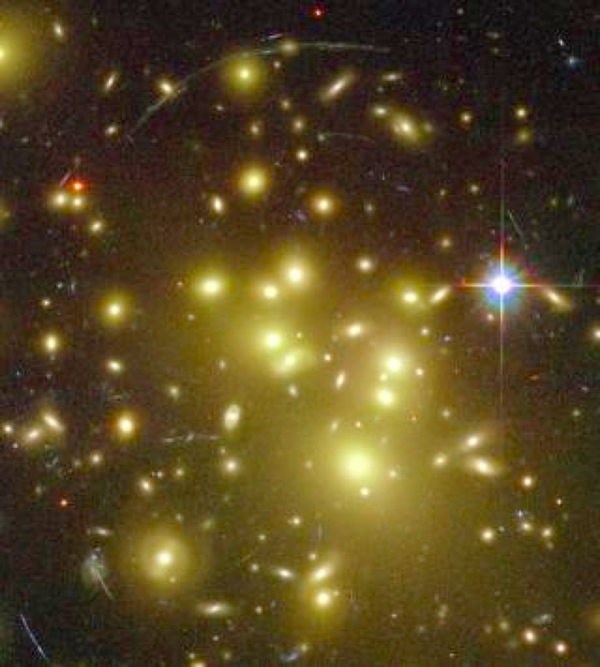

Image Credit: Hubblesite.org
Massive galaxies warp space-time around themselves, bending light rays so that we can see around them. It's a phenomenon known as a "space warp". These warps in space provide a very rare and valuable gravitational lens, and now, astronomers are calling on the general population to aid them in the hunt.
Just a couple weeks ago, on May 8, 2013, the SpaceWarps Project was launched as a way to invite everyday citizens to aid in the detection of space warps.
The SpaceWarps project is a gravitational lens discovery engine consisting of thousands of deep sky objects — like galaxies or clusters of galaxies — which may contain warps. With examples of both true and false gravitational lenses, humans are able to sift through the images and spot the unusual appearance of a space warp with relatively little training.
"Even if individual visitors only spend a few minutes glancing over 40 or so images each, [that is] really helpful to our research - we only need a handful of people to spot something in an image for us to say that it's worth investigating," said Dr. Aprajita Verma, a co-leader of the project from the University of Oxford.
The site gives easy instructions on what a space warp looks like and how to mark potential candidates on each image. After you have made your selections, you will then have a chance to discuss them with other volunteers and experts via an online forum. Citizen participation will assist in creating computer models, and the final collection of space warp candidates. The findings will then be published, allowing both amateur and expert the opportunity to further their studies.
See for yourself: visit www.spacewarps.org and see if you can spot any of these unique and ethereal astronomical objects. Even the "armchair astronomer" can enjoy discovering these incredible natural lenses. And, what you find could possibly help unravel the mystery that dark matter plays in galaxy formation.
"Not only do space warps act like lenses, magnifying the distant galaxies behind them, but also the light they distort can be used to weigh them, helping us to figure out how much dark matter they contain and how it's distributed," said Dr. Phil Marshall, co-leader of the project at the University of Oxford.
The initial set of deep space images to be investigated in this project is from the Canada-France-Hawaii Telescope (CFHT) legacy survey.
"We have scanned the images with computer algorithms, but there are likely to be many more space warps that the algorithms have missed," said Dr. Anupreeta More, co-leader of the project at the Kavli Institute for the Physics and Mathematics of the Universe (Kavli IPMU) and the University of Tokyo. "Realistically simulated space warps are dropped into some images to train volunteers to spot them and reassure people that they are on the right track."
But why would astronomers want to share their data with non-scientists?
According to studies, the human brain is far superior to computer algorithms when it comes to recognizing a gravitational lens in a photograph, and non-scientists are just as proficient as an expert in spotting them.
The team describes the project as collaboration between humans and computers - data from the human volunteers will help to train computers to become better space warp spotters.
The Canada-France-Hawaii Telescope legacy survey isn't the only group who will benefit from the Space Warps project. Other surveys will also use the information gathered by the experiment, such as the Dark Energy Survey led by the United States and the Hyper Suprime-Cam survey led by Japan.
Future large area surveys such as with Large Synoptic Survey Telescope and Euclid will also feel the affects of the SpaceWarps program, too.
Original Story Source: Kavli IPMU News Release
What do you think of the SpaceWarps Project? Let us know in the comments!















